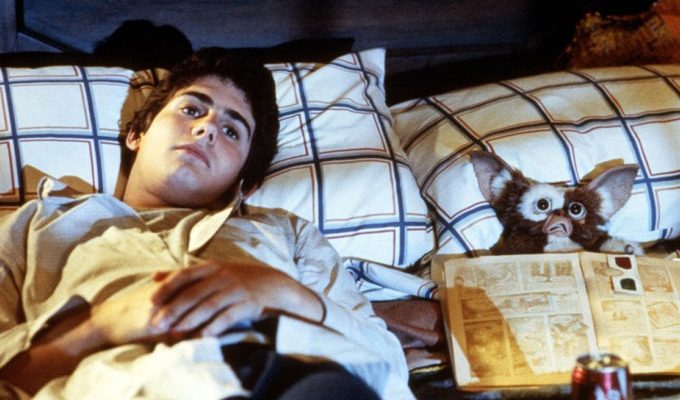
30 years ago, Steven Spielberg—still some way from his 38th birthday—was at the height of his power. He had invented the modern blockbuster in “Jaws,” re-invented the old-school adventure in “Raiders of the Lost Ark,” perfected the family movie in “E.T.,” united all these things for “Close Encounters of the Third Kind,” and founded an immensely powerful production company, funding and steering innovative, horror-flavored projects like “Poltergeist” and “The Twilight Zone”—and something called “Gremlins,” a project Spielberg had bought and then given to a promising director of comic horror called Joe Dante, because the maestro himself was busy with “Indiana Jones and the Temple of Doom.”
The “Gremlins” script, by a young writer named Chris Columbus, was exactly the kind of thing Spielberg had made work so well so far. He had perfected a certain tone: family-friendly because it was also family-frightening. And you could be sure his movies were being seen by families: all of his big hits—including “Jaws”—had been released with PG certificates. 1984 was a time before the existence of the PG-13, when an R rating meant limited commercial prospects and was something studios did their best to avoid. Meanwhile, the huge range of content covered by the PG meant you could show kids a film where, say, a formerly adorable but now malevolent creature is rammed into a microwave and gorily exploded. And, clearly, audiences wanted to see it.

That said, there were limits. Early versions of the script had more mayhem from the transmogrified gremlins than just behaving unacceptably during a screening of “Snow White and the Seven Dwarves” (a movie whose tone—think of the scene in the haunted forest—still defines the scary family film). They were also going to eat the hero’s dog and kill his mother (offscreen) and throw her severed head down the stairs (onscreen—you can read more about these edits in our “Gremlins” piece from a couple of years ago). Some of these darker elements, it was decided, had to go. But the kitchen scene, with the blender and the microwave, stayed in, and became legendary. Meanwhile, Spielberg was shooting another PG movie in which a man’s beating heart was ripped out on screen. What could possibly go wrong?
‘Temple of Doom’ came out in late May 1984, and “Gremlins” two weeks later, on the very same weekend as “Ghostbusters.” They’re similar films, sharing a particularly spooky kind of bizarre but domestic horror: the microwave in “Gremlins” has a mirror in the “Ghostbusters” fridge which is literally a portal to hell. “Ghostbusters” took first place at the box office over “Gremlins,” but both were huge hits, as was ‘Temple of Doom’: they ended up being the US’ 2nd (“Ghostbusters”), 3rd (Indy) and 4th (“Gremlins”) highest grossing films of the year (“Beverly Hills Cop” just barely beat “Ghostbusters” to the top spot).

“Gremlins” was overshadowed to a certain extent by “Ghostbusters,” but it’s a brilliant film, full of weird, witty and malevolent touches, like the scene in which the newly evil-ified gremlins torture and torment Gizmo, who has retained his innocence, by suspending him from a wall and throwing darts at him. The absolute weirdest and yet moving moment—possibly the funniest, possibly (if you’re a kid) the most upsetting—is Phoebe Cates‘ lengthy speech about how she knows Santa isn’t real: because her father died trying to climb down the chimney and surprise her one Christmas, and they only found him days later when the whole house started to smell. The studio tried to get the speech removed from the film, but Dante—backed up by Spielberg—insisted on it, saying it epitomized the tone of the whole film. And it does.

